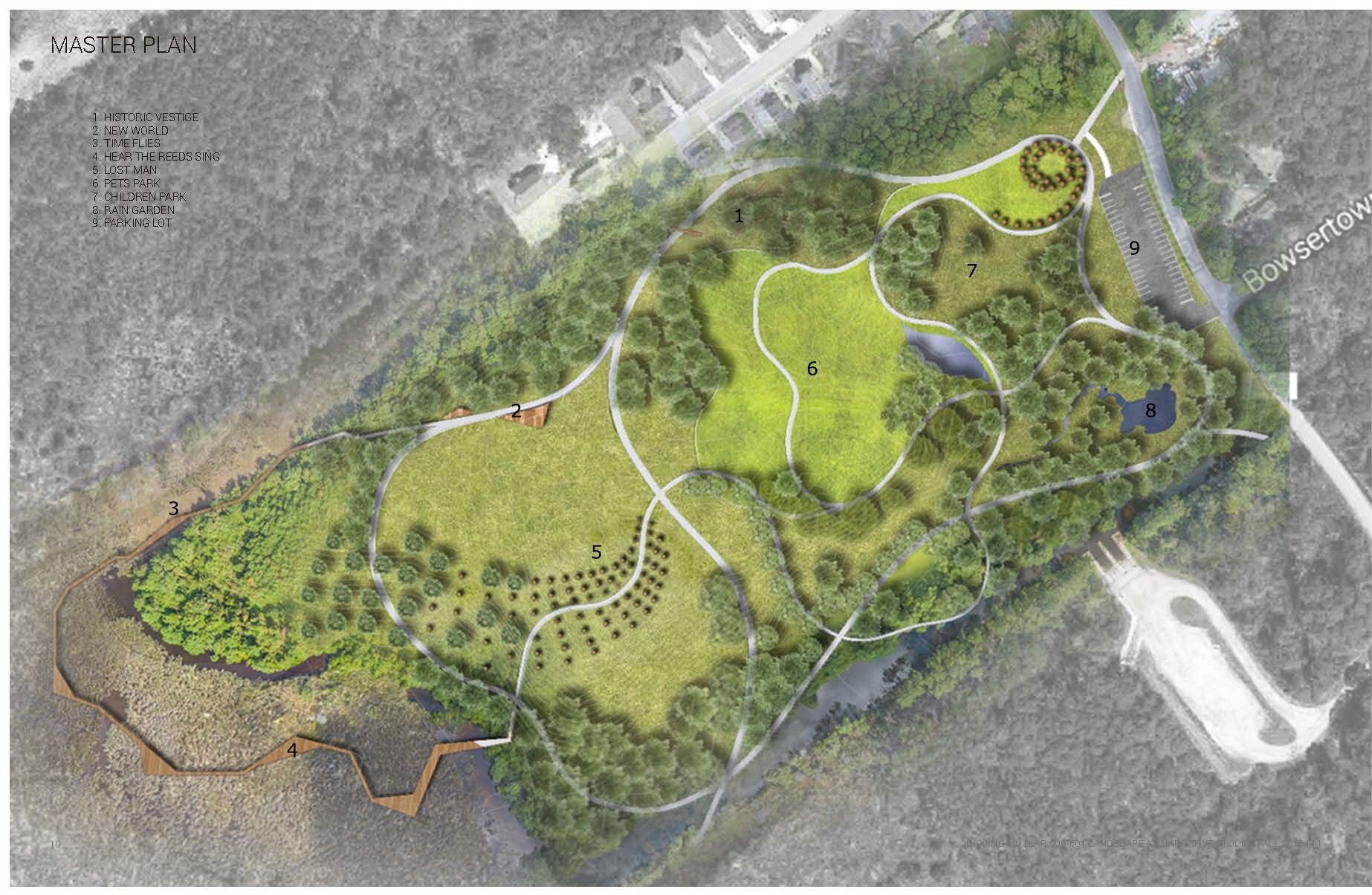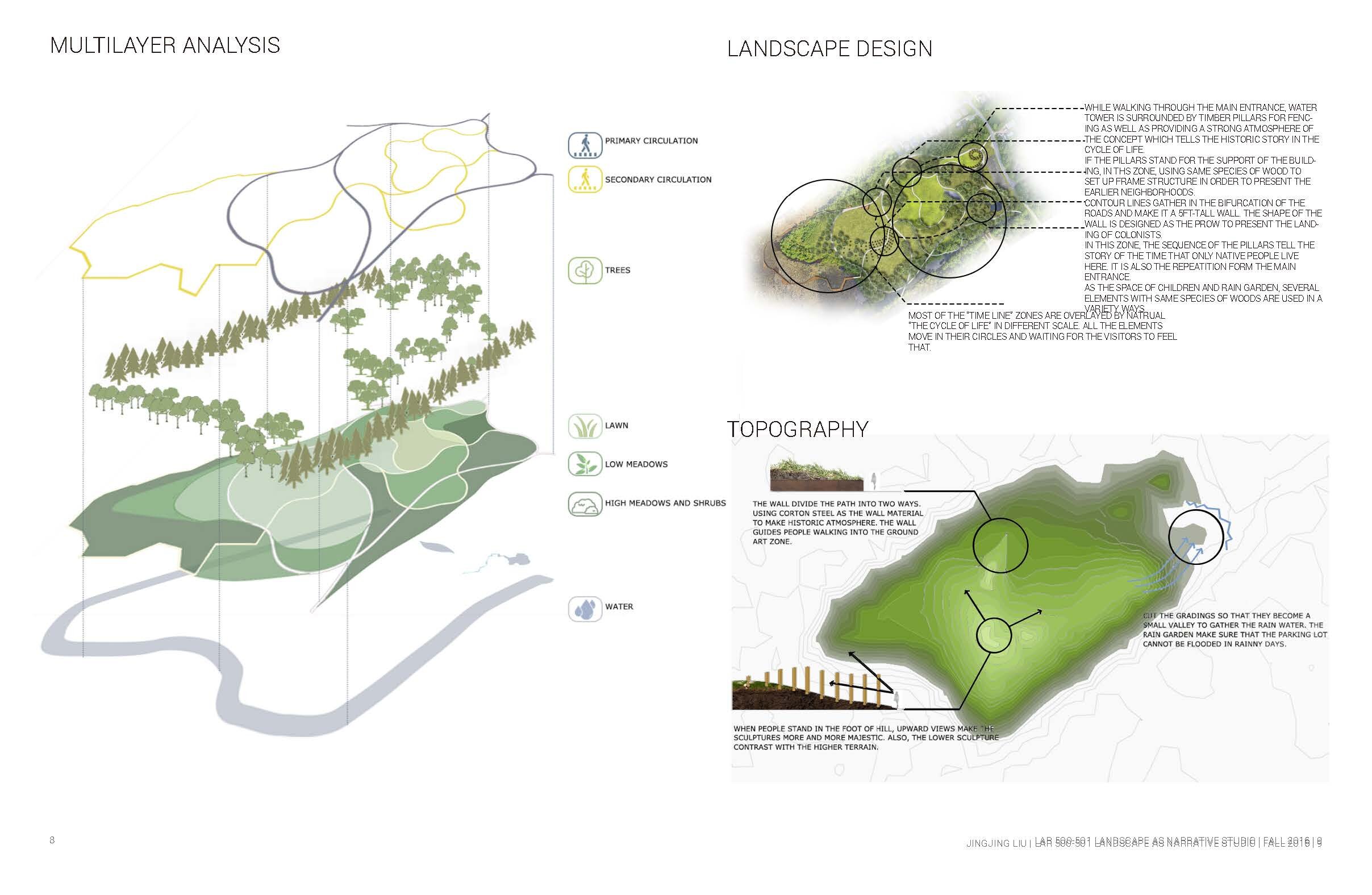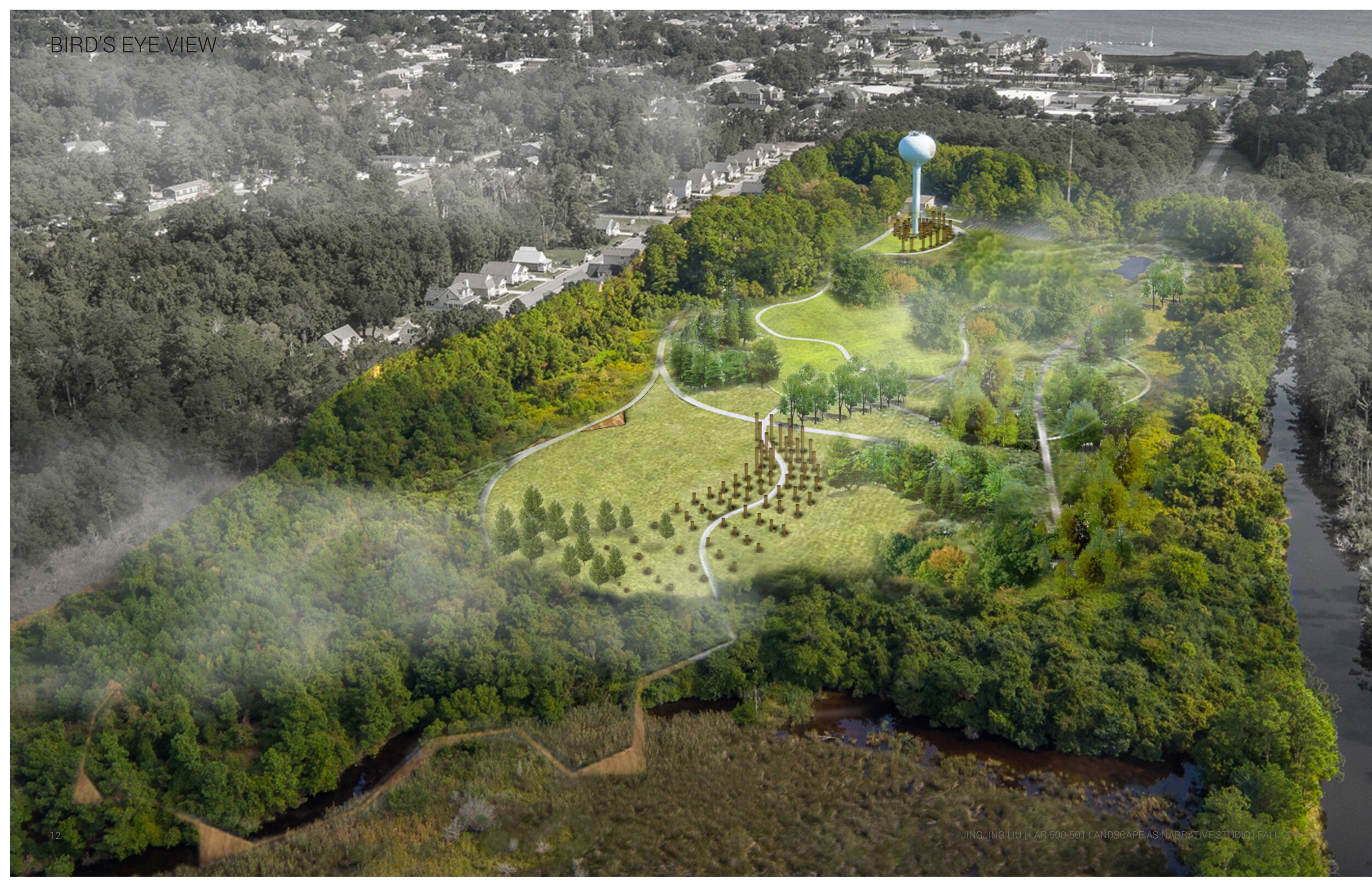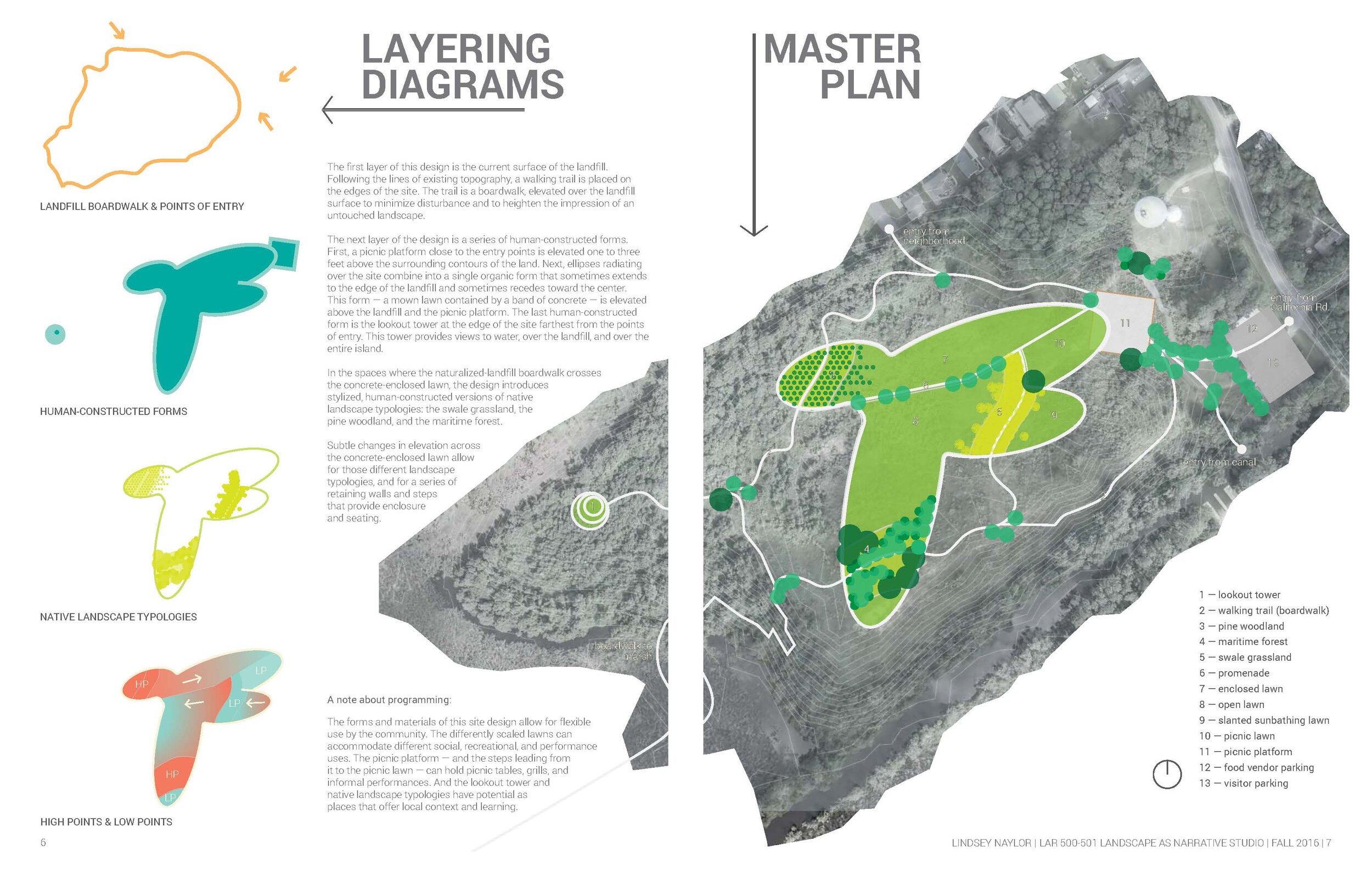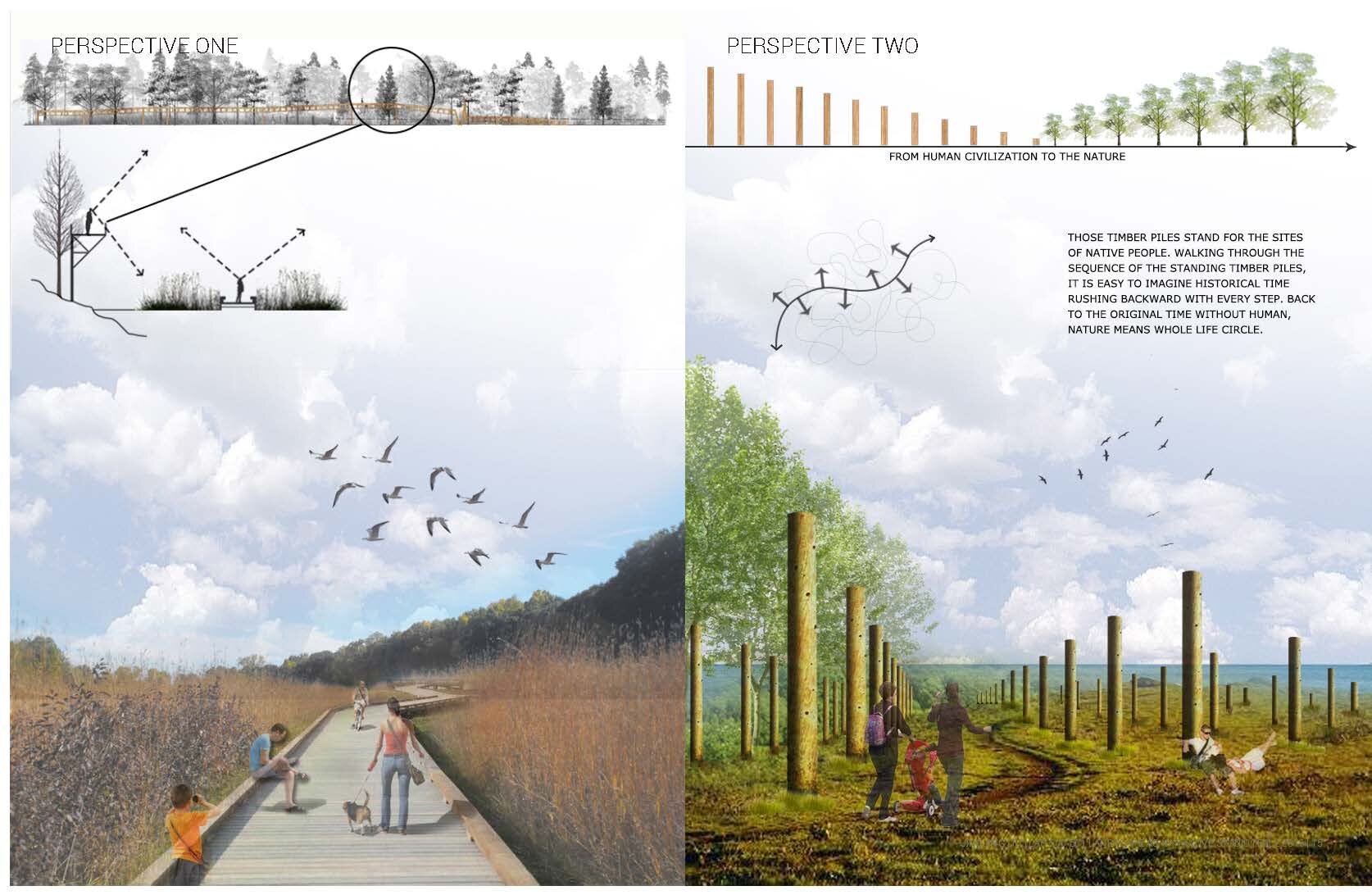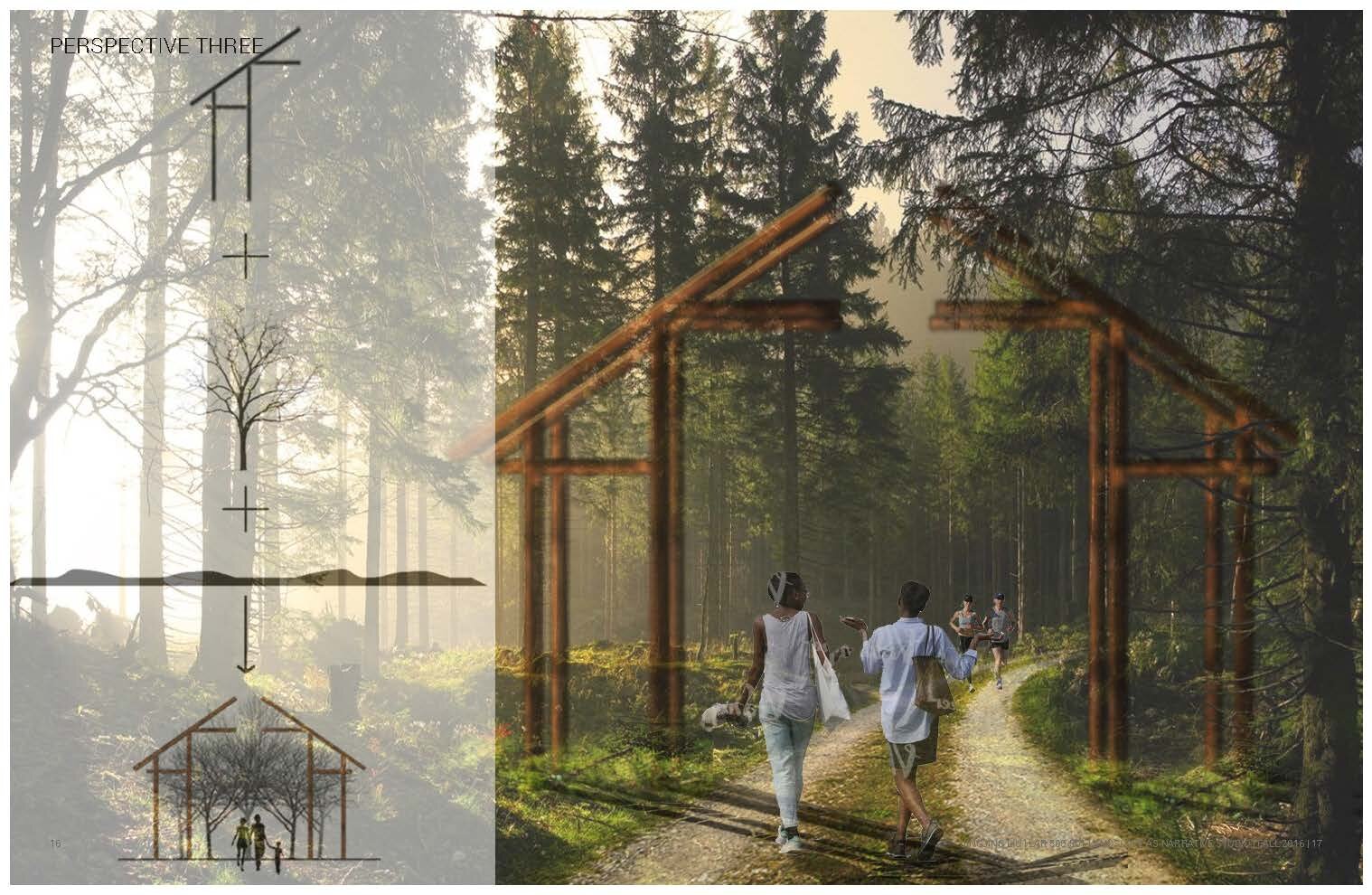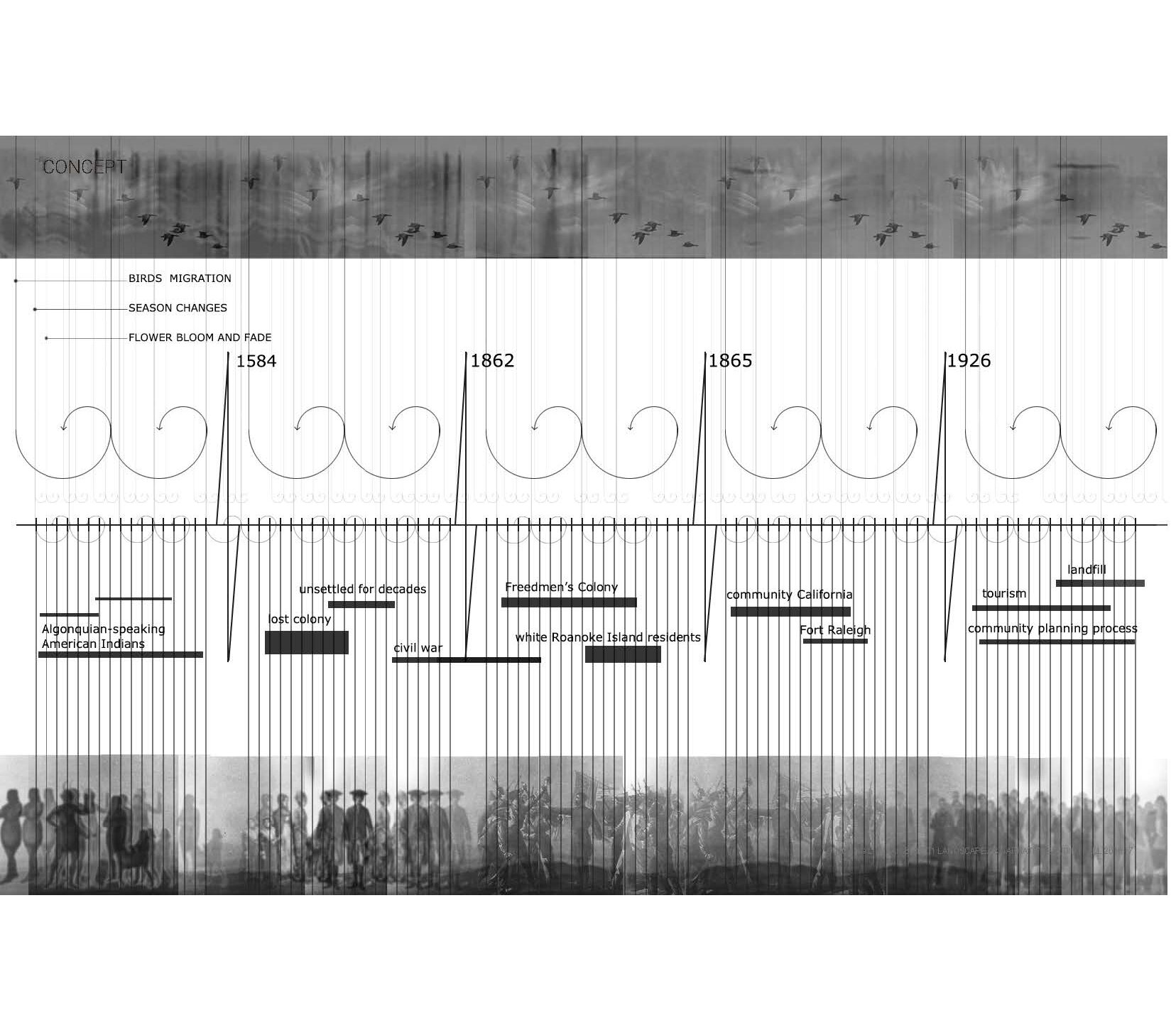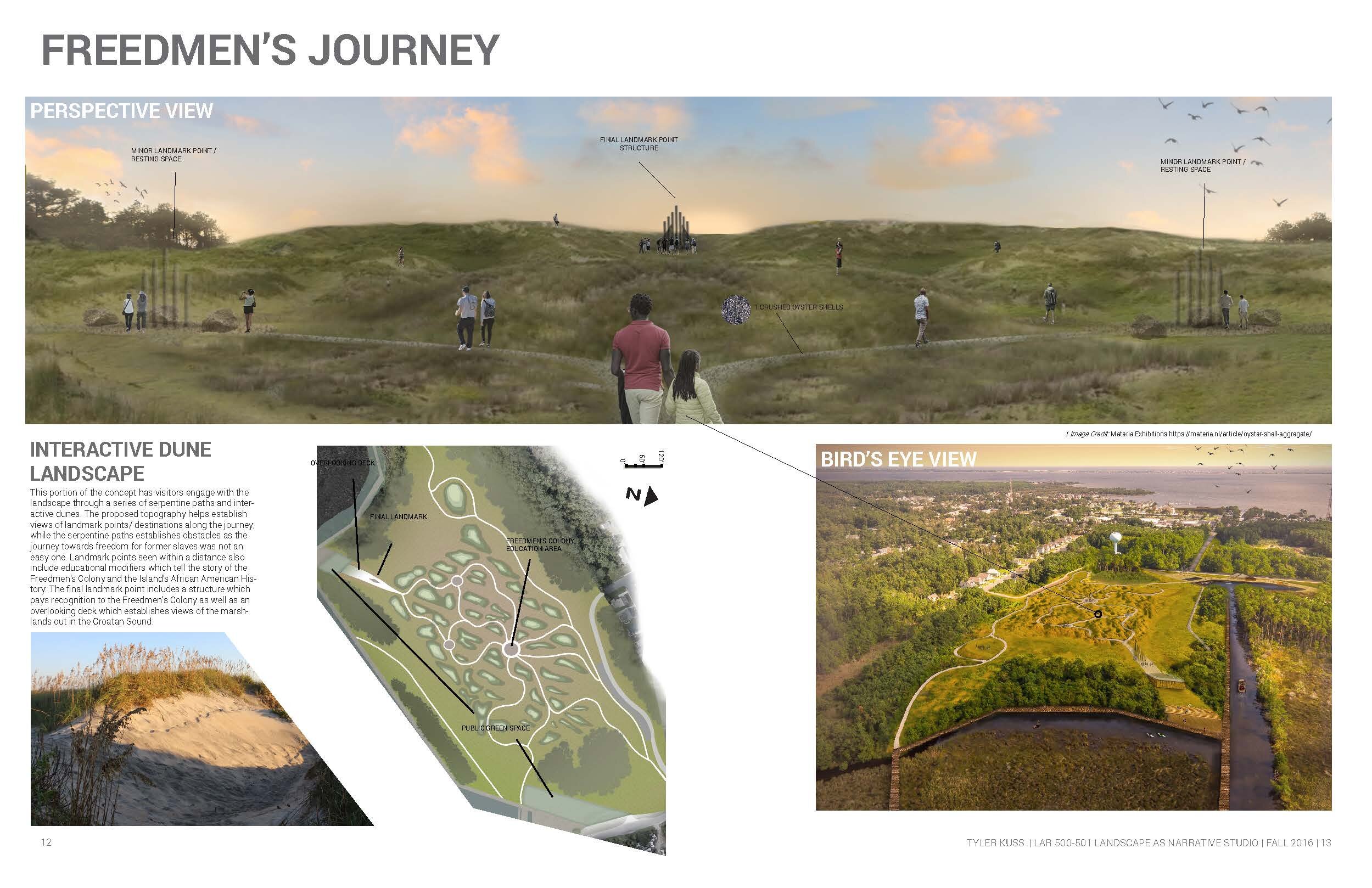
Bowsertown Landfill Adaptive Reuse (2016)
Project Summary
Manteo, NC is a town of 1,400 people and is the county seat of Dare County. The town is located on Roanoke Island, which holds an important place in Native American, African American, and European history. Bowsertown is the local name for an unincorporated community located just outside Manteo and is one of the few places on the island mostly populated by year-round residents.
The most important aspect of the project site is its history as a Freedmen’s Colony—a settlement of formerly enslaved African American women, men, and children who came to Union-occupied Roanoke Island seeking asylum during the Civil War. The area would become known as “California”, which referenced the colony’s hope to realize the American Dream. The site remains historically important to all North Carolinians, including many current Bowerstown residents who are direct descendants of the California Colony. In direct contrast to this important history, and highlighting centuries of institutional racism and environmental injustice, a large part of the area was turned into an active landfill for local waste from the early 1960s to 1991, when it was decommissioned and capped with 2 feet of soil.
While there are a number of recreational activities for tourists on the Outer Banks, the Bowsertown community lacks these resources in their immediate vicinity. Walkable recreation spaces that re-tell and celebrate the rich Native American and African American history of Bowsertown and Roanoke Island are needed. In developing their proposals, students collaborated with staff from the Coastal Studies Institute (CSI) on this project. The CSI is a multi-university collaboration located near Manteo that facilitates acculturated, place–based research and education programs engaging stakeholders around an array of issues such as water quality, fisheries, renewable energy, maritime heritage, and coastal economies. The CSI has been active in working in Bowsertown and other coastal communities.
Objectives
The primary objective of this project was to carefully analyze the Bowsertown landfill site through the lens of social, cultural, environmental, climatological, and other influencing factors. Students were required to develop proposals that made strong connections (past, present, and future) to the function(s) and meaning(s) of this place. Additional programmatic requirements that included the development of an active + passive recreational site (landscape architects) and a boatcraft center (architecture).
Project Start Year
2016
Location
Manteo, NC
Sample Images
